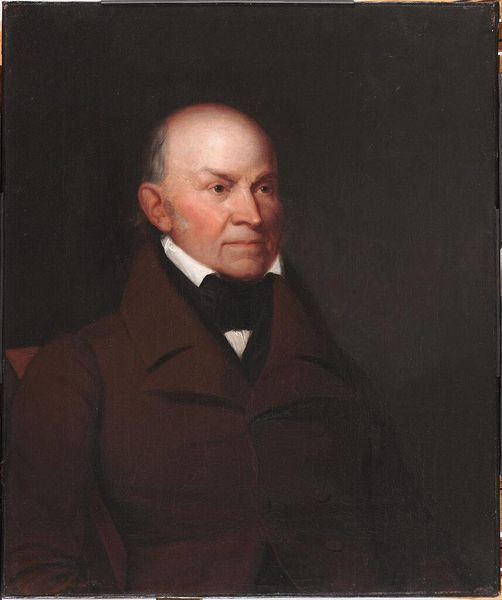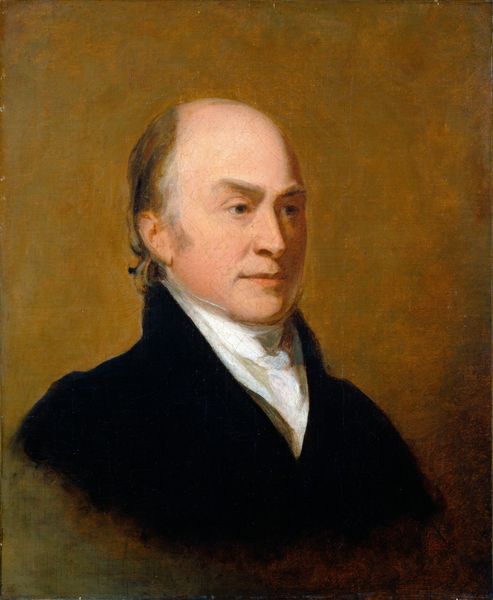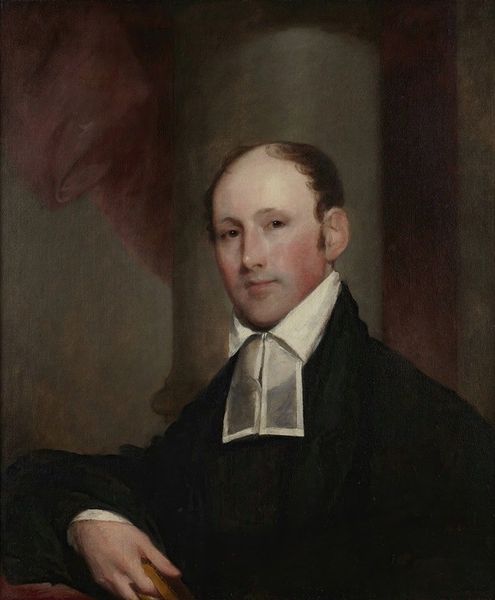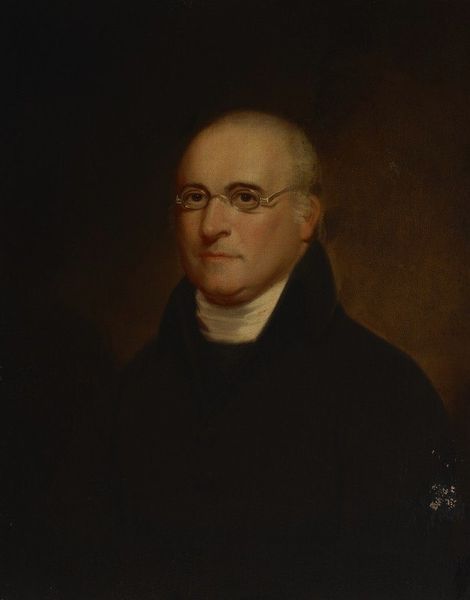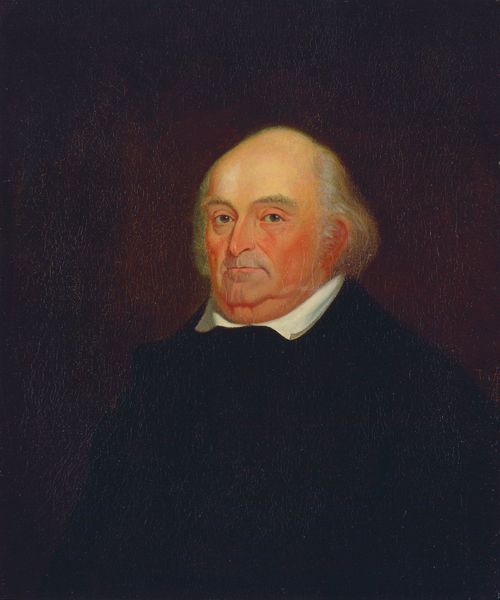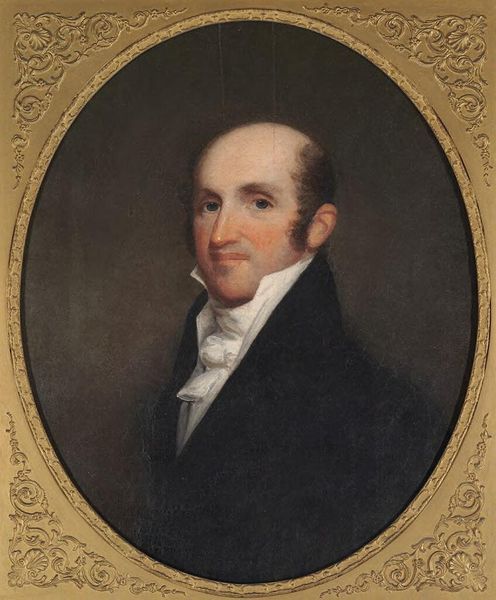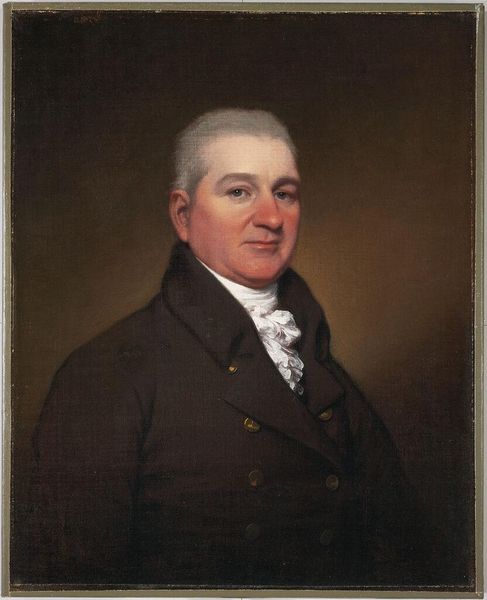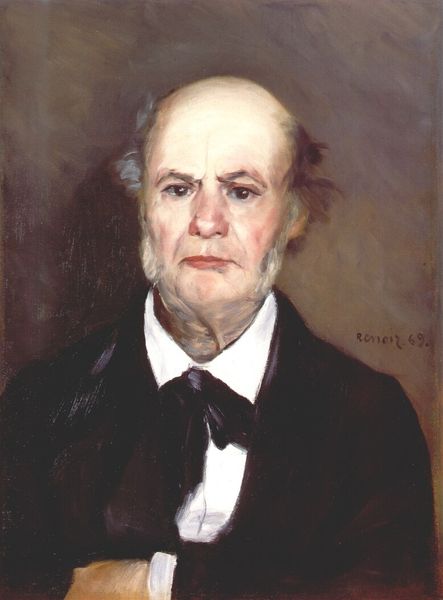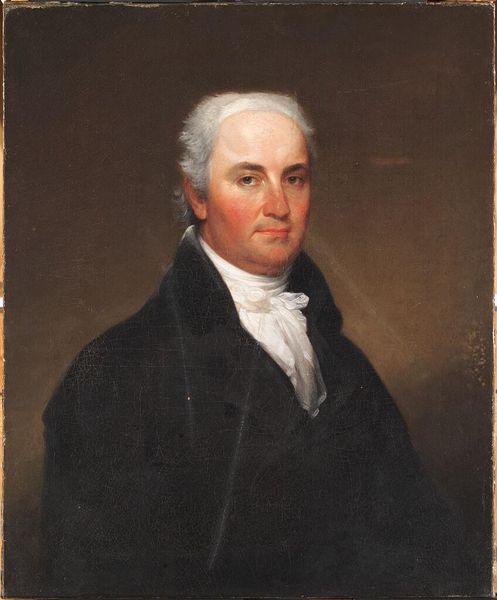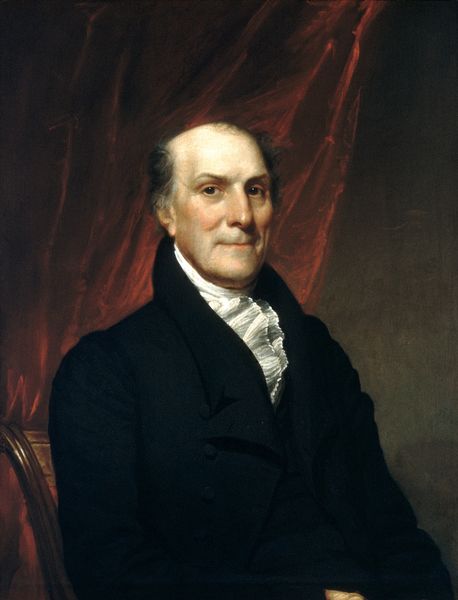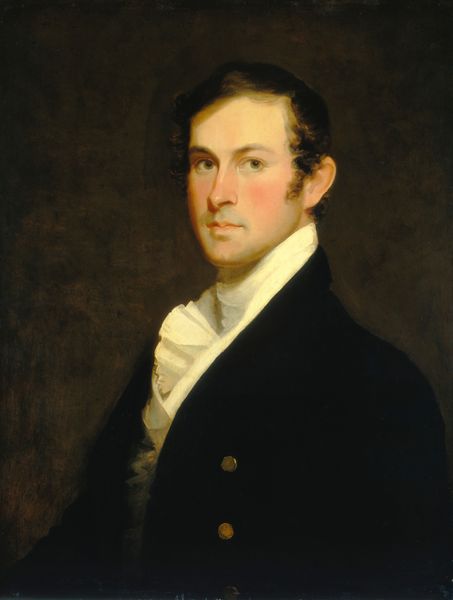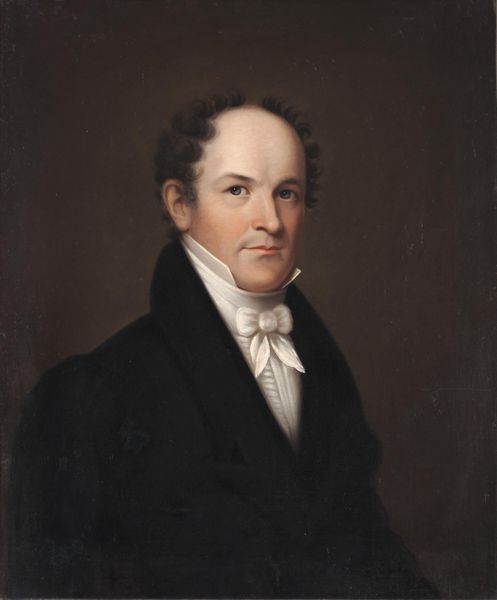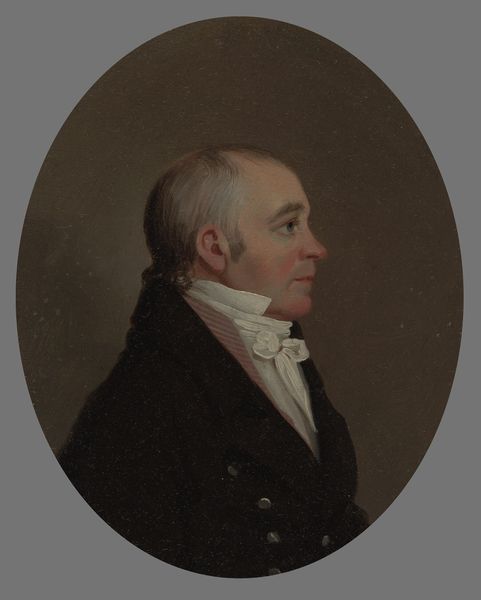
painting, oil-paint
#
portrait
#
figurative
#
neoclacissism
#
portrait image
#
portrait
#
painting
#
oil-paint
#
male portrait
#
portrait reference
#
portrait head and shoulder
#
portrait drawing
#
history-painting
#
facial portrait
#
portrait art
#
fine art portrait
#
digital portrait
Copyright: Public Domain: Artvee
Curator: Upon first glance, I’m struck by the formal simplicity of this portrait. The muted tones and straightforward composition evoke a sense of seriousness, a kind of restrained authority. Editor: Let's delve deeper. We are looking at a portrait of John Quincy Adams by Gilbert Stuart, a significant figure in early American portraiture. This depiction situates Adams within a lineage of power and political influence, undeniably shaped by the early American context of nation-building. Curator: Indeed. And Stuart's masterful brushwork—look at the way he renders the subtle gradations of light on Adam's face. Note the texture of his coat set against the softer, blended tones of the background; these elements give the painting a tangible, almost sculptural presence. Editor: Absolutely, that neoclassical drive towards idealism flattens Adams into a generalized symbol of power, while his own legacy is one of increasing voter enfranchisement in America, challenging prior aristocratic norms. He pushed back against the southern slavocracy. These details give greater context to this particular figure depicted by Stuart. Curator: Perhaps. But the very lack of contextual clues forces us to confront the essential elements of portraiture: the capturing of likeness, the rendering of form, and the conveying of character through purely visual means. Look at the intense gaze, that’s neoclassical emotional restraint if you ask me! Editor: But can we truly separate an artwork from its context? Especially when that context directly shapes the subject's identity and actions? To see Adams merely as form is to erase his complexities. Consider, for instance, the irony of such formal idealism obscuring the social reality and class divides. It makes one question the very nature of representation. Curator: A fair point. But even acknowledging those tensions, the success of this portrait lies in its formal arrangement. The balance of light and shadow, the economy of detail… It is the essence of neoclassical portraiture—clear, ordered, and profoundly self-contained. Editor: And yet, understanding Stuart’s subject in relation to the changing tides of social and political contexts makes it hard to not to scrutinize it as a symbol. Both are always working at once. Curator: I appreciate your insights. The work’s historical weight now gives its formal elements a renewed sense of importance. Editor: Indeed. Thinking through the contexts surrounding an artwork enhances, rather than diminishes, its inherent qualities.
Comments
No comments
Be the first to comment and join the conversation on the ultimate creative platform.
